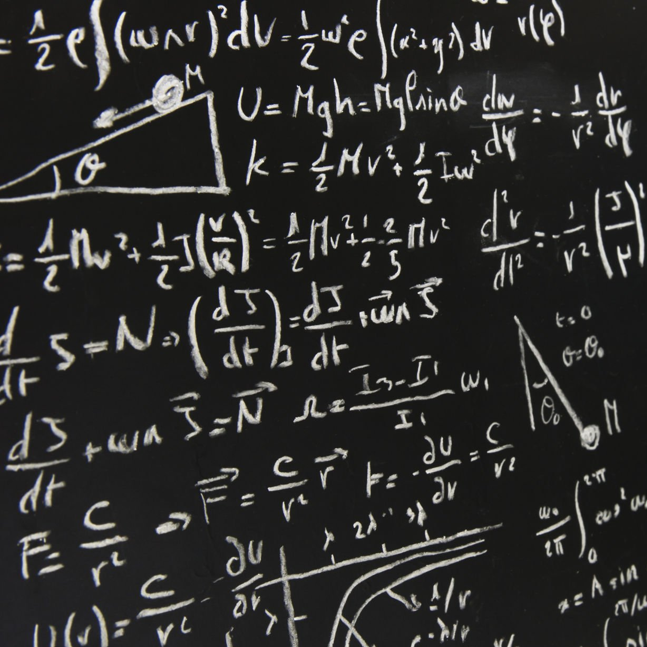
A team of researchers from BCAM- Basque Center for Applied Mathematics and Ikerbasque, composed of Javier Fernández de Bobadilla - Ikerbasque Research Professor and Group Leader of the Singularities and Algebraic Geometry Theory line at BCAM; and Tomasz Pełka - Postdoctoral Researcher at BCAM, has managed to solve a conjecture of a problem that had been open for more than five decades.
This work has been published in the Annals of Mathematics, a prestigious scientific journal specializing in mathematics, published by Princeton University and the Institute for Advanced Study.
Using an innovative approach that links algebraic geometry with symplectic geometry, the scientists have demonstrated the conjecture, highlighting the powerful ability of mathematics to build bridges between different branches of knowledge.
This conjecture resolved by Fernández de Bobadilla and Pełka is framed in the Theory of Singularities in Algebraic Geometry. This theory studies the special points in geometric figures defined by algebraic equations, where these figures are not smooth. For example, on a curve, these singular points can be places where the curve crosses itself or has a sharp point instead of a smooth one. The mentioned theory seeks to understand, classify, and describe these singular points to better understand the global properties of the figure. By identifying and analyzing singularities, mathematicians can obtain a more complete view of the structure and behavior of geometric figures. Singularities frequently appear in natural and social sciences: black holes in physics, fluid mechanics, equilibrium points in optimization problems, bifurcations in dynamic systems...
Oscar Zariski (Poland, 1899 – USA 1986) was a Belarusian-American mathematician who made essential contributions in the field of algebraic geometry, and whose work and profound influence persist in the development of contemporary mathematics. Zariski founded the Theory of Equisingularity, which deals with studying and comparing the complexity of the different singularities that may appear. In 1970, in one of his pioneering works, he posed eight questions, of which seven have been solved by different researchers over the years (in 2005, Fernández de Bobadilla himself solved one of them). Only the multiplicity conjecture remained open, and in it, the most studied case is known as "the multiplicity conjecture in family". This case, which stands out in importance due to its relation to the approach of other schools of Singularity Theory such as those of Arnol’d and Teissier, is the problem solved by Fernández de Bobadilla and Pełka.
The work of Fernández de Bobadilla and Pełka follows the path opened by mathematicians like M. McLean, who establish connections between the theory of singularities in algebraic geometry and the theory of symplectic dynamics, pseudoholomorphic curves (by Gromov, Floer, and others), combining it with other very recent techniques of hybrid and tropical geometry, which have culminated in the solution of Zariski's conjecture in family.
This advance not only solves an intricate mathematical problem but is also another example of how the combination of techniques of very diverse nature and the bridges between different styles of mathematical thinking allow solving problems whose treatment does not seem possible by approaching them with techniques from a single field: "This result not only resolves an old question but also strengthens the bridge between different areas of mathematics, showing how seemingly distant ideas can converge in a single framework, leading to very fertile applications," explains Javier Fernández de Bobadilla.
The connection between algebraic and symplectic geometry has many other manifestations, one of which, mirror symmetry, motivated by developments in theoretical physics, is one of the most active and important research topics in mathematics today. This very year, the BBVA Foundation awarded the Frontiers of Knowledge Award to C. Voisin and Y. Eliashberg precisely for fundamental contributions that establish connections between algebraic geometry and symplectic geometry, including advances in mirror symmetry.
Future implications
The work conducted by the mathematicians at BCAM underscores the importance of mathematics as a discipline that continues to demonstrate its capacity to drive discoveries that transcend the boundaries of the natural and social sciences, even though many of its advancements are discovered motivated by the internal development of mathematics itself. Discoveries like those of Fernández de Bobadilla and Pełka open new doors and illustrate how open problems and conjectures can act as engines for mathematical progress, inspiring the creation of new theories and methods that transform our understanding of the natural and mathematical world around us. In this case, ideas that ultimately stem from classical mechanics have demonstrated their connection and effectiveness in problems arising from algebra.
This highlights the importance of intellectual curiosity and interdisciplinarity in the pursuit of human knowledge. This interdisciplinarity is a constant in the historical development of mathematics and its interaction with other sciences. It is the combination of constant dialogue with other sciences, independent development from them, and abstraction of ideas and structures that can be applied in very different contexts, which makes mathematics an incredibly effective science.
.png)
